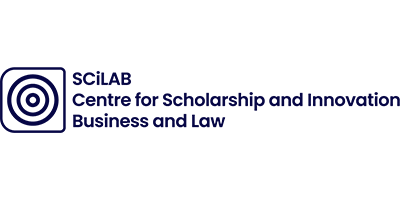How do I solve the world’s problems from my desk?

By Jessica Giles
In the face of some of the world’s seemingly intractable global problems, it can be easy to feel disempowered and disengaged. Even identifying or prioritising a particular global crisis to engage with can be a challenge.
We might argue that the pandemic and its effects are the overwhelming global crisis facing us today….Or is it climate change or water and food inequity? Or nuclear proliferation? Or national governments and the limits they experience in tackling the multiple threats to peace, security, health and wellbeing?
Interdisciplinary methodology provides a platform for us to explore and address global issues.
1. What interdisciplinarity is and why we should use it
Collaboration between academia and other sectors has gone a long way towards providing mechanisms to address global issues. However, these collaborations require a new type of knowledge. This is because, by their very nature, the problems they address are unresovable within one discipline alone. In addition, there is a pressing need to develop ways of working that integrate an understanding of online collaboration, teaching and learning. This is particularly relevant during lockdown when, in the absence of other distractions, we are presented with a unique opportunity for foundations of knowledge to be laid, so that future generations are equipped to address the issues of their time.
It is the synthesis of knowledge from various disciplines to create new knowledge that constitutes interdisciplinarity (Berger 1972 and more recently Tobi and Kampen 2018). This bringing together of experts from various disciplines avoids the pitfalls of viewing a problem from one perspective alone, ensuring that the analysis of and research into the problem, as well as the proposed solution(s), are sufficiently rigorous and sophisticated to actually bring about lasting beneficial change.
The synthesis of knowledge leading to the creation of new knowledge sets interdisciplinarity apart from other forms of disciplinary collaboration. In our interdisciplinary modules at the Open University we look to develop those skills necessary to engage with the process of synthesis of subject matter, leading to the creation of new knowledge. These interdisciplinary modules provide the skills training and build the capacity for knowledge synthesis that will inform future leaders capable of addressing the big issues of their time.
2. What does interdisciplinarity look like?
If, for example, we ask individuals from various disciplines what they see below:

We might get the following answers:
Faith leader: “It signifies the darkness under which we all live at present”
Astro-physicist: “It’s a black hole …..”
Artist: “It signifies the absence of light”
Philosophical lawyer: “It’s a metaphor for bivalent reasoning which sees things in black or white/right or wrong”
Musician: “It signifies musical notation”
Interdisciplinarity brings together these understandings to create a new understanding of the significance of the image. If we put all these individuals together and suggest they collaborate to synthesise their knowledge here is what may emerge:
Just like a black hole which subsumes anything that enters it, this image signifies in art form the darkness that has befallen Western Liberal democracies as they have become overly dependent on bivalent, as opposed to multivalent reasoning, overpowering the capacity of religious and non-religious plural voices to reach consensus, stifling harmony that might otherwise exist between members of civil society.”
The interaction has caused members of the different disciplines to see differently and to collaborate to produce new knowledge. If, instead of the image above, we put in its place a global issue and we bring together a group of actors from various academic disciplines (and various groups within civil society), we can ask them to synthesise their knowledge to address the problem. This harnesses the strengths and perspectives from each and brings them to bear collaboratively to seek the common good in respect of the global issue identified. An example of this is the SDG Perspectives Project. This fosters interdisciplinary collaboration across the SDGs (Elsevier, 2018).
3. Interdisciplinary methodology
The above example provides an explanation of the nature and purpose of interdisciplinarity. The steps taken to carry out this type of research (the methodology), however, are more complex. As is the writing and teaching of interdisciplinary modules. This is because each discipline has its own ‘way of doing things’. It will have a culture, literature and academic practices that have been developed over time. Academics will have trained over the years in the particular methodologies applicable to their discipline. They will be highly experienced at teaching and researching in their field. They will also have an acute awareness of what constitutes rigorous evidence in their field and in their discipline.
An example of existing interdisciplinary pedagogy at the Open University can be found in the master’s degree module W822, Business, Human Rights Law and Corporate Social Responsibility. For this module, the online material facilitates a synthesis of business theory and practice with human rights and business law in an international development context. The module was created by experts from the three disciplines who determined the nature of the knowledge synthesis, with some scope for independent research at the point at which students author assessments.
The tutors on the module are taken from law, business and international development and the students are drawn from each of these disciplines. It is taught fully online using online classrooms and distance learning pedagogic approaches. This enables students to develop interdisciplinary skills, engaging with global issues from multiple perspectives, synthesising knowledge to analyse key issues.
The drawing together of tutors from various disciplines to teach on a module is labelled the ‘lifeboat’ model (Franks et al 2007). It forces everyone to move away from the comfort zone of their own disciplinary environment, and to collaborate in order to ‘survive’ and facilitate the optimum study journey for the students. Ideally, for example, law tutors co-tutor with business and or international development tutors so that students gain perspectives from the various disciplines facilitating their synthesis of knowledge.
An alternative mechanism for facilitating the learning of interdisciplinary skills in students was developed by academics from The Netherlands and Belgium (Tobi and Kampen 2017). In the face of criticisms that interdisciplinarity lacked a unifying methodology and rigour, they developed a process method, to create a framework to facilitate interdisciplinary research regardless of the particular combination of disciplines (Tobi and Kampen 2017). This Methodology for Interdisciplinary Research Framework (MIR framework) is applied by Tobi and Kampen to both research and teaching. The framework sets out steps to facilitate the bringing together of individuals from multiple disciplines identifying various steps in the process towards knowledge synthesis.
The MIR framework involves four stages: 1) Conceptual design 2) Technical design 3) Execution and 4) Integration. Interaction between individuals from various disciplines informs each stage of the process and knowledge synthesis occurs iteratively. This means that as new knowledge is created it informs the process at various stages on an ongoing basis. This leads to the final report stage (integration) where everything is drawn together.
This framework is used by Tobi and Kampen to facilitate students’ interdisciplinary research, drawing together students from multiple disciplines. According to this method of teaching interdisciplinarity, students from various disciplines are placed into groups, they are taught the methodology applicable to interdisciplinary interaction and research. They then apply that methodology to a project they choose on the basis of the disciplines present within their group. This approach has a focus on collaborative student led research.
In both types of interdisciplinary study students are actively involved in creating interdisciplinary knowledge. The results for a student and tutor can be phenomenal. After some trepidation at engaging with new disciplines, in particular at Master’s degree level, students tend to flourish in an interdisciplinary environment, learning to explore new ways of approaching their own discipline by bringing in their learning from the other disciplines. Interactions between the students is exciting because of the multiple perspectives they bring. Tutoring is hugely rewarding and thoroughly worthwhile because there is a sense in which one is training the ‘next’ generation to go out and solve the world’s problems, even if, during our pandemic times, this is from a desk.
Recent research, however, informs us that there is still some way to go to ensure both tutors and students are able to articulate the extensive skills development that takes place during interdisciplinary study. In addition, there is a need to address the gender bias in employment rates, with high numbers of women choosing interdisciplinary study compared to men: Kemp and Cooke (2020).
4. So how do we solve the world’s problems from our desks and in particular during lockdown?
The answer proposed in this blog is to take an interdisciplinary online approach. If we develop these skills now in our students and enable our students to articulate them, incorporating online capacity for collaboration informed by the pedagogy of online learning, our leaders of the future will have the skills to address the global issues of the time, even in lockdown.
References:
Elsevier (2018) “SDG Perspectives Project fosters interdisciplinary collaboration across SDGs” RELX SDG Resource Centre: https://sdgresources.relx.com/research-articles/sdg-perspectives-project-fosters-interdisciplinary-collaboration-across-sdgs (accessed 18 November 2020)
Franks, D., Dale, P., Hindmarsh, R., Fellows C., Buckridge, M. and Cybinski, P. (2007) “Interdisciplinary foundations: reflecting on interdisciplinarity and three decades of teaching and research at Griffith University, Australia” 32:2 Studies in Higher Education, pp167-185
Kemp, I., and Cooke, H., “Understanding Approaches to Supporting Multi/Interdisciplinary Students with Developing and Articulating Employability Skills” Association for Interdisciplinary Studies, pathways 42-3 Supporting Students: https://interdisciplinarystudies.org/pathways-42_3-supporting_students_with_employability/ (accessed 18 November 2020)
Tobi, H. and Kampen, J.K., (2018) “Research design: the methodology for interdisciplinary research framework” Qual Quant 52:1209-1225

With thanks to my colleagues John Sinclair and Miriam Mbah for their input.
Jessica Giles SFHEA, barrister. Jessica is Co-chair of W203 and W822 modules and Director of the Project on Interdisciplinary Law and Religion Studies at the Open University.
This blog represents the views of the individual, not SCiLAB or the Open University.

